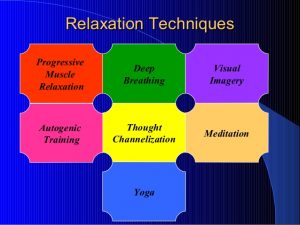
For many of us, relaxation means zoning out in front of the TV at the end of a stressful day. But this does little to reduce the damaging effects of stress. To effectively combat stress, we need to activate the body’s natural relaxation response. You can do this by practicing relaxation techniques such as deep breathing, meditation, rhythmic exercise, and yoga. Fitting these activities into your life can help reduce everyday stress and boost your energy and mood.
What is the relaxation response (and why is it so powerful)?
When stress overwhelms your nervous system your body is flooded with chemicals that prepare you for “fight or flight.” While the stress response can be lifesaving in emergency situations where you need to act quickly, it wears your body down when constantly activated by the stresses of everyday life.
No one can avoid all stress, but you can counteract it by learning how to produce the relaxation response, a state of deep rest that is the polar opposite of the stress response. The relaxation response puts the brakes on stress and brings your body and mind back into a state of equilibrium. The goal is to be both physically relaxed and mentally alert at the same time.
When the relaxation response is activated:
- Your heart rate slows down
- Breathing becomes slower and deeper
- Blood pressure drops or stabilizes
- Your muscles relax
- Blood flow to the brain increases
In addition to its calming physical effects, the relaxation response also increases energy and focus, combats illness, relieves aches and pains, heightens problem-solving abilities, and boosts motivation and productivity. Best of all, anyone can reap these benefits with regular practice.
Practicing progressive muscle relaxation
Progressive muscle relaxation is a two-step process in which you systematically tense and relax different muscle groups in the body. With regular practice, progressive muscle relaxation gives you an intimate familiarity with what tension—as well as complete relaxation—feels like in different parts of the body. This awareness helps you spot and counteract the first signs of the muscular tension that accompanies stress. And as your body relaxes, so will your mind.
You can combine deep breathing with progressive muscle relaxation for an additional level of stress relief.
Practicing progressive muscle relaxation
Most progressive muscle relaxation practitioners start at the feet and work their way up to the face.
- Loosen your clothing, take off your shoes, and get comfortable.
- Take a few minutes to relax, breathing in and out in slow, deep breaths.
- When you’re relaxed and ready to start, shift your attention to your right foot. Take a moment to focus on the way it feels.
- Slowly tense the muscles in your right foot, squeezing as tightly as you can. Hold for a count of 10.
- Relax your right foot. Focus on the tension flowing away and the way your foot feels as it becomes limp and loose.
- Stay in this relaxed state for a moment, breathing deeply and slowly.
- When you’re ready, shift your attention to your left foot. Follow the same sequence of muscle tension and release.
- Move slowly up through your body, contracting and relaxing the muscle groups as you go.
- It may take some practice at first, but try not to tense muscles other than those intended.
Before practicing progressive muscle relaxation, consult with your doctor if you have a history of muscle spasms, back problems, or other serious injuries that may be aggravated by tensing muscles.
Progressive muscle relaxation sequence
- Right foot, then left foot
- Right calf, then left calf
- Right thigh, then left thigh
- Hips and buttocks
- Stomach
- Chest
- Back
- Right arm and hand, then left arm and hand
- Neck and shoulders
- Face
Leave a Reply